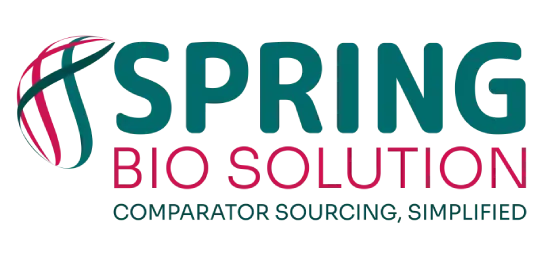Good documentation practices (GDP) are crucial in the pharmaceutical industry to ensure the integrity, reliability, and traceability of data and processes throughout the product lifecycle. With stringent regulatory requirements and the need for consistent quality standards, pharmaceutical companies rely on robust documentation practices to maintain compliance and uphold patient safety. Effective GDP encompasses the systematic recording of all activities, procedures, and decisions related to the development, manufacturing, testing, and distribution of pharmaceutical products. By adhering to established guidelines and standards, such as those outlined in Good Manufacturing Practice (GMP) regulations, companies can enhance transparency, facilitate accountability, and mitigate risks associated with errors or inconsistencies in documentation. In essence, good documentation practices serve as the cornerstone of quality assurance in the pharmaceutical industry, supporting the delivery of safe and effective medicines to patients worldwide.
Good documentation practices in global clinical trials ensure adherence to regulatory requirements set by global health authorities, enhancing compliance with standards such as Good Clinical Practice (GCP) guidelines. Proper documentation practices maintain the integrity of trial data, ensuring accuracy, completeness, and traceability throughout the global clinical trial process, which is crucial for global acceptance and regulatory approval. Clear and comprehensive documentation facilitates transparency in global clinical trials conduct and results, enabling effective communication among stakeholders worldwide and promoting reproducibility of findings across different geographical regions and regulatory jurisdictions.
Pharmaceutical manufacturers adhere to Good Documentation Practices (GDP) to ensure compliance with regulatory standards such as those set by the FDA (Food and Drug Administration) or EMA (European Medicines Agency). By maintaining detailed documentation, pharmaceutical manufacturers can effectively track the journey of a drug from raw materials to finished product, ensuring consistency, identifying potential issues, and facilitating timely corrective actions to maintain product quality and regulatory compliance. Good Documentation practices are also necessary for storage and distribution of the medicinal products. These are also terms as good Distribution of warehouse practices. The quality of the product should not be hampered during its shelf life and must be secured until it reaches the final consumer i.e. the patient who picks it up from the retail pharmacy. Therefore, the entire distribution and supply chain needs to work in collaboration with all the stakeholders systematically. These operations are governed by standard operating procedures and check and balance mechanisms to verify the maintenance of the storage conditions and transport conditions until the final delivery. All the daily operations are captured as per the good documentation practices for verification and quality audits.
Good Documentation Practices mitigate risks associated with errors, contamination, or inconsistencies in the production by pharmaceutical manufacturers, safeguarding product integrity and patient safety while facilitating efficient regulatory audits and inspections.
Here are some key types of documentation practices commonly used in the pharmaceutical sector:
- Standard Operating Procedures (SOPs): SOPs provide detailed instructions on how to perform specific tasks or operations within the pharmaceutical manufacturing process.
- Batch Records: Batch records document the entire manufacturing process for a specific batch of a drug product. They include information such as raw material quantities, processing steps, equipment used, environmental conditions, and in-process testing results.
- Validation Protocols and Reports: Validation protocols outline the procedures for validating equipment, processes, and systems used in pharmaceutical manufacturing. This includes equipment qualification, process validation, cleaning validation, and analytical method validation.
- Change Control Documentation: Change control documentation tracks any changes made to processes, equipment, facilities, or materials used in pharmaceutical manufacturing. This includes change requests, impact assessments, risk analyses, and approval records.
- Deviation Reports: Deviation reports document any departures from established procedures or specifications during the manufacturing process. They describe the deviation, its root cause, impact on product quality, corrective actions taken, and preventive measures implemented to prevent recurrence.
- Complaint Handling Records: Complaint handling records document any complaints received from customers or stakeholders regarding the quality, safety, or efficacy of pharmaceutical products. They include details of the complaint, investigation findings, corrective actions taken, and follow-up measures.
- Training Documentation: Training documentation records the training activities undertaken by personnel involved in pharmaceutical manufacturing. This includes training materials, attendance records, competency assessments, and training effectiveness evaluations.
- Documentation Controls and Review: Documentation controls ensure the integrity, reliability, and traceability of pharmaceutical documentation throughout its lifecycle. This includes document numbering, version control, approval workflows, and document retention policies. Various types of documents are drawn for specific operations such as storage and distribution logs, temperature record logs, audit trails etc.
Good documentation practices are paramount in the pharmaceutical industry for several reasons. Firstly, they ensure compliance with regulatory requirements, maintaining adherence to standards set by agencies like the FDA and EMA, which is critical for product approval and market access. Secondly, comprehensive documentation facilitates traceability, allowing for the identification of any issues or discrepancies throughout the drug development and manufacturing process. This traceability enhances quality control and supports investigations into deviations or adverse events. Moreover, clear, and well-maintained documentation promotes efficiency and consistency in operations, reducing the risk of errors and promoting reproducibility in research and production. Ultimately, robust documentation practices not only safeguard patient safety but also contribute to the overall integrity, transparency, and trustworthiness of pharmaceutical products and processes.
In conclusion, adhering to good documentation practices in the pharmaceutical industry is paramount for ensuring regulatory compliance, product quality, and patient safety. By maintaining accurate, complete, and legible records throughout the entire lifecycle of a pharmaceutical product, companies can mitigate risks, streamline processes, and demonstrate accountability. Effective documentation practices not only support efficient communication and decision-making within organizations but also foster trust among stakeholders, ultimately contributing to the delivery of safe and effective medicines to patients worldwide.




